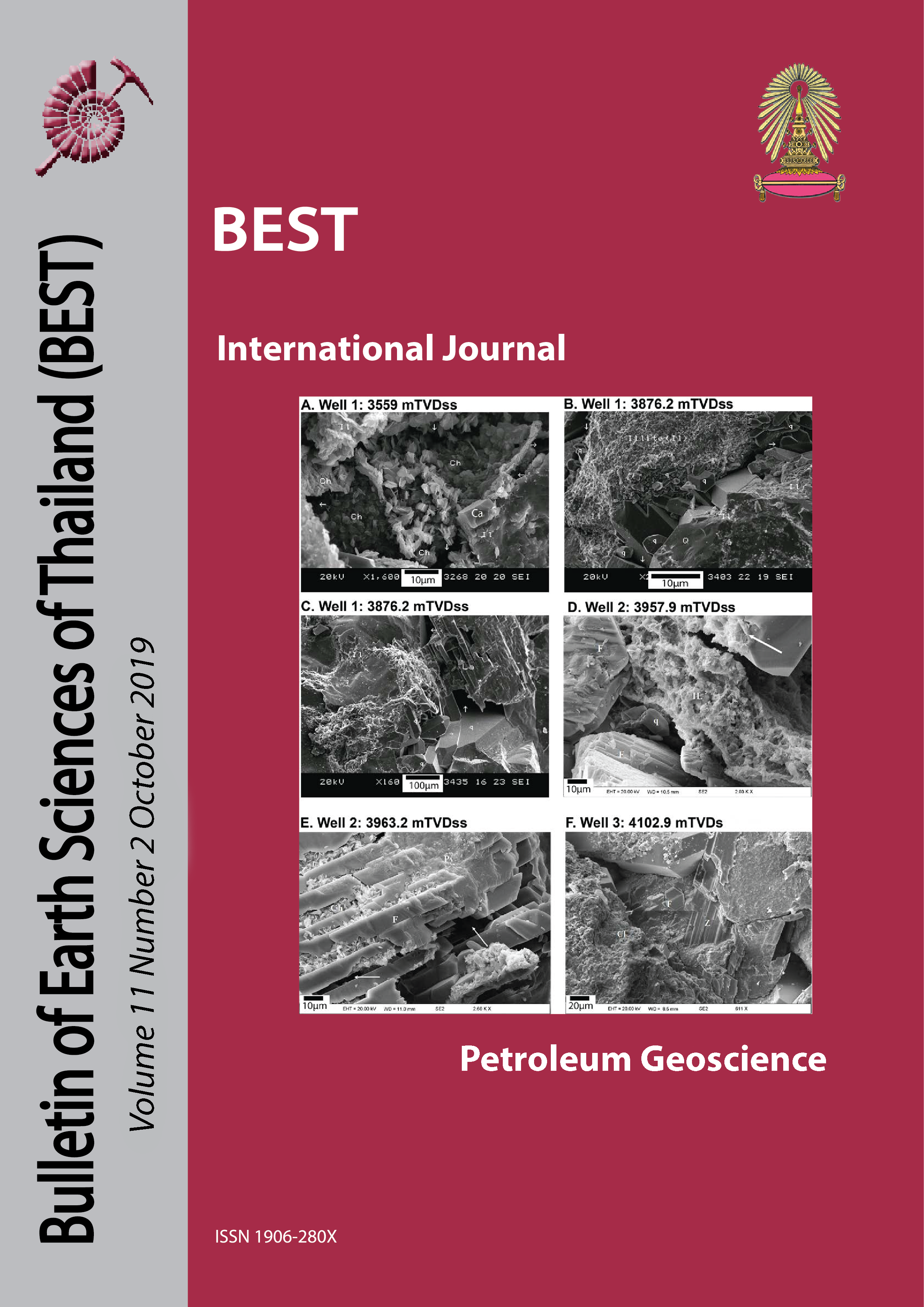Reservoir Flow Unit Definition from Unit-Specific Permeability Estimates Using Wireline Logs and Core Data
Main Article Content
Abstract
Permeability is most the useful petrophysical property for guiding reservoir flow performance. In the Pattani Basin, Gulf of Thailand, the perforation strategy is complicated and requires accurate petrophysical property measurements in the reservoir in order to design the most effective perforation program. Factors that control reservoir permeability in Pattani Basin are not well understood, so currently there is no accurate method to predict and calculate the reservoir permeability in non-cored intervals in wells in Gulf of Thailand. In this study, the aim is to broaden a permeability prediction approach across a large area in the southern Pattani Basin with broad variations in depositional parameters. The results show different trends with different permeability prediction equations for each depositional facies. There are four facies defined by using the differences of lithology, based on sedimentary structures and depositional environments in the reservoirs namely a.) Conglomerate and conglomeratic sandstone b.) Fining-upward, cross-bedded sandstone c.) Interbedded sandstone and siltstone d.) Coarsening-upward, alternating sandstone and siltstone. The permeability prediction equation matches to raw data from core study have a coefficient of determination rank from 0.57 to 0.75, with an overall coefficient of determination of 0.81. The results from prediction equations calibrated between predicted permeability values and actual permeability values show an overall coefficient of determination of 0.40. Actual production performance validation shows an overall success rate of permeability prediction when using the study equations is 56.82%. The predicted permeability can be used to guide for the sequence of perforation and also guide perforation locations in the reservoir sands.
Article Details

This work is licensed under a Creative Commons Attribution-NonCommercial-NoDerivatives 4.0 International License.
Copyright © 2008 Department of Geology, Faculty of Science, Chulalongkorn University. Parts of an article can be photocopied or reproduced without prior written permission from the author(s), but due acknowledgments should be stated or cited accordingly.
References
Chaiwan, P., 2010, Building a core-calibrated wireline-based permeability prediction model for Ubon field, Thailand, with model testing in uncored well sections and validation by TST or DST, Master’s thesis, Chulalongkorn University, Thailand, 80 p.
Jardine, E.,1997. Dual Petroleum systems governing the prolific Pattani Basin, off-shore Thailand, Proceedings of the Petroleum Systems of SE Asia and Australia Conference, Jakata, May 2123, 1997, p. 351-363.
Lockhart, B.E., Chinoroje, O., Enomoto, C.B., and Hollomon, G.A., 1997. Early Tertiary deposition in the southern Pattani Trough, Gulf of Thailand, Proceeding of the International Conference on the Stratigraphy and Tectonic Evolution of Southeast Asia and the South Pacific, Bangkok, August 19-24, 1997, p.476-489.
Narapan, J., 2015, Different types of organicrich geological markers in South Pailin field, Pattani Basin, Gulf of Thailand, Master’s thesis, Chulalongkorn University, Bangkok, 51 p.
Watcharanantakul, R. and Morley, C.K., 2000, Syn-rift and post-rift modelling of the Pattani Basin, Thailand: evidence from a ramp-flat detachment: Marine and Petroleum Geology, v. 17, p. 937-958.


